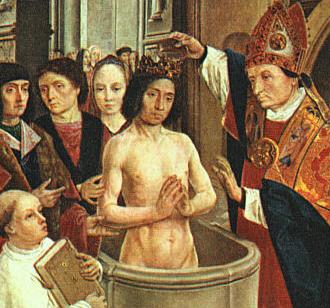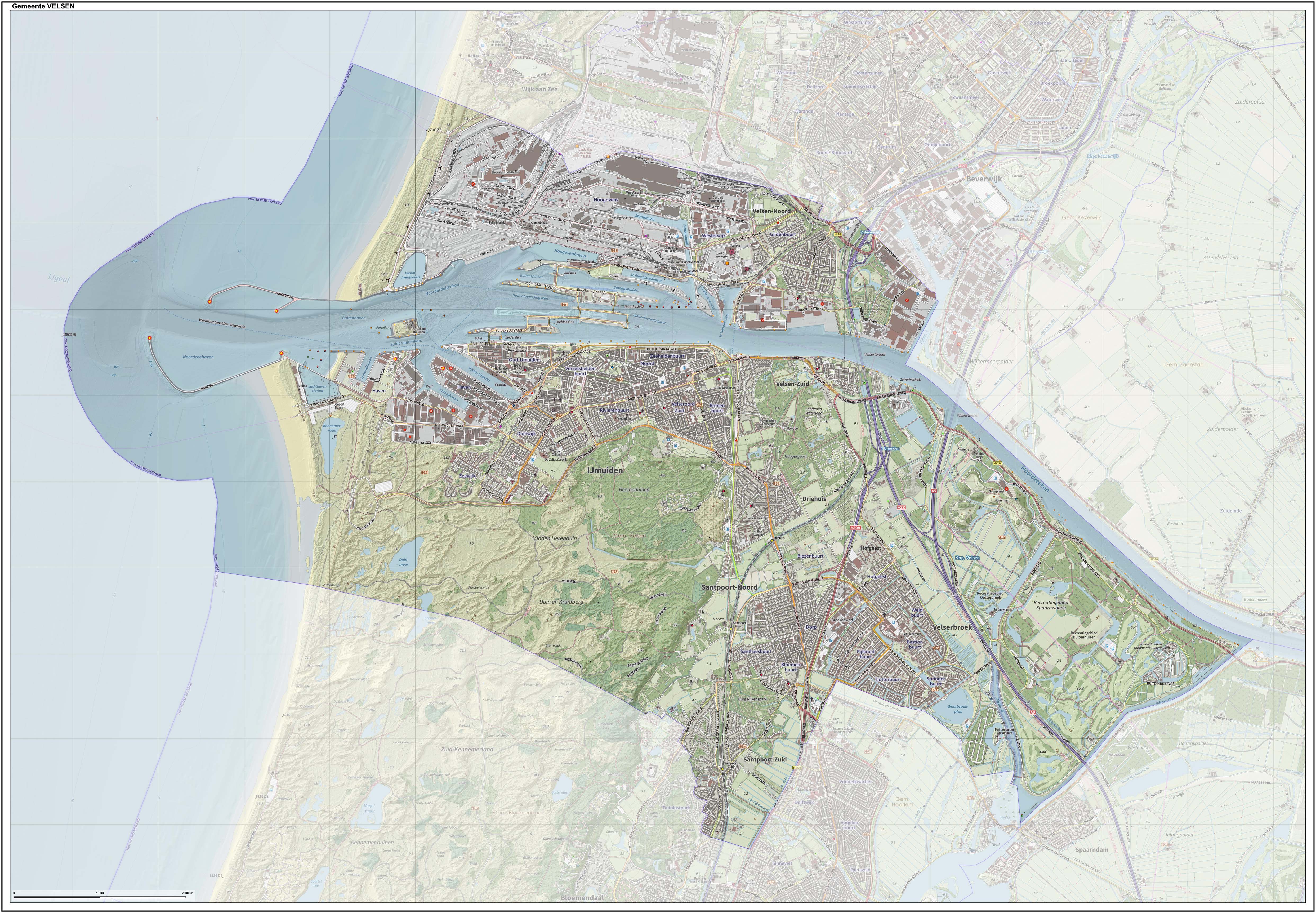|
Adriënne Broeckman-Klinkhamer
Adriënne Broeckman-Klinkhamer (1876–1976) was a Dutch painter, illustrator, and textile artist. Biography Broeckman-Klinkhamer née Klinkhamer was born on 4 December 1876 in Amsterdam, the seventh of ten children. She attended ''School voor Kunstnijverheid (Haarlem)'' (School for Arts and Crafts (Haarlem)) and ''Akademie van beeldende kunsten (Den Haag)'' (Royal Academy of Art, The Hague) Around 1908 she married fellow artist Anne Marinus Broeckman (1874-1946) with whom she had two children, one of whom, Elga Eymer, went on to become an artist. The couple settled in Laren in North Holland. In 1915 Broeckman-Klinkhamer became one of the few women members of the Gooi artists association ''Club De Tien''. She was also a member of ''Arti et Amicitiae'', , and . Her work was included in the 1939 exhibition and sale ''Onze Kunst van Heden'' (Our Art of Today) at the Rijksmuseum in Amsterdam. Broeckman-Klinkhamer died on 12 April 1976 in Velsen Velsen () is a municipality in t ... [...More Info...] [...Related Items...] OR: [Wikipedia] [Google] [Baidu] |
Dutch People
The Dutch, or Netherlanders (Dutch language, Dutch: ) are an ethnic group native to the Netherlands. They share a common ancestry and culture and speak the Dutch language. Dutch people and their descendants are found in migrant communities worldwide, notably in Argentina, Aruba, Australia, Brazil, Canada,Based on Statistics Canada, Canada 2001 Census]Linkto Canadian statistics. Caribbean Netherlands, Curaçao, Germany, Guyana, Indonesia, New Zealand, Sint Maarten, South Africa, Suriname, and the United States.According tFactfinder.census.gov The Low Countries were situated around the border of France and the Holy Roman Empire, forming a part of their respective peripheries and the various territories of which they consisted had become virtually autonomous by the 13th century. Under the Habsburgs, the Netherlands were organised into a single administrative unit, and in the 16th and 17th centuries the Northern Netherlands gained independence from Spain as the Dutch Republic. The ... [...More Info...] [...Related Items...] OR: [Wikipedia] [Google] [Baidu] |
1876 Births
Events January * January 1 ** The Reichsbank opens in Berlin. ** The Bass Brewery Red Triangle becomes the world's first registered trademark symbol. *January 27 – The Northampton Bank robbery occurs in Massachusetts. February * February 2 ** The National League of Professional Base Ball Clubs is formed at a meeting in Chicago; it replaces the National Association of Professional Base Ball Players. Morgan Bulkeley of the Hartford Dark Blues is selected as the league's first president. ** Third Carlist War (Spain): Battle of Montejurra – The new commander General Fernando Primo de Rivera marches on the remaining Carlist stronghold at Estella, where he meets a force of about 1,600 men under General Carlos Calderón, at nearby Montejurra. After a courageous and costly defence, Calderón is forced to withdraw. * February 14 – Alexander Graham Bell applies for a U.S. patent for the telephone, as does Elisha Gray. * February 19 – Third Carlist War ... [...More Info...] [...Related Items...] OR: [Wikipedia] [Google] [Baidu] |
19th-century Textile Artists
The 19th century began on 1 January 1801 (represented by the Roman numerals MDCCCI), and ended on 31 December 1900 (MCM). It was the 9th century of the 2nd millennium. It was characterized by vast social upheaval. Slavery was abolished in much of Europe and the Americas. The First Industrial Revolution, though it began in the late 18th century, expanded beyond its British homeland for the first time during the 19th century, particularly remaking the economies and societies of the Low Countries, France, the Rhineland, Northern Italy, and the Northeastern United States. A few decades later, the Second Industrial Revolution led to ever more massive urbanization and much higher levels of productivity, profit, and prosperity, a pattern that continued into the 20th century. The Catholic Church, in response to the growing influence and power of modernism, secularism and materialism, formed the First Vatican Council in the late 19th century to deal with such problems and confirm cer ... [...More Info...] [...Related Items...] OR: [Wikipedia] [Google] [Baidu] |
19th-century Dutch Women Artists
The 19th century began on 1 January 1801 (represented by the Roman numerals MDCCCI), and ended on 31 December 1900 (MCM). It was the 9th century of the 2nd millennium. It was characterized by vast social upheaval. Slavery was abolished in much of Europe and the Americas. The First Industrial Revolution, though it began in the late 18th century, expanded beyond its British homeland for the first time during the 19th century, particularly remaking the economies and societies of the Low Countries, France, the Rhineland, Northern Italy, and the Northeastern United States. A few decades later, the Second Industrial Revolution led to ever more massive urbanization and much higher levels of productivity, profit, and prosperity, a pattern that continued into the 20th century. The Catholic Church, in response to the growing influence and power of modernism, secularism and materialism, formed the First Vatican Council in the late 19th century to deal with such problems and confirm ce ... [...More Info...] [...Related Items...] OR: [Wikipedia] [Google] [Baidu] |
Painters From Amsterdam
Painting is a visual art, which is characterized by the practice of applying paint, pigment, color or other medium to a solid surface (called "matrix" or " support"). The medium is commonly applied to the base with a brush. Other implements, such as palette knives, sponges, airbrushes, the artist's fingers, or even a dripping technique that uses gravity may be used. One who produces paintings is called a painter. In art, the term "painting" describes both the act and the result of the action (the final work is called "a painting"). The support for paintings includes such surfaces as walls, paper, canvas, wood, glass, lacquer, pottery, leaf, copper and concrete, and the painting may incorporate other materials, in single or multiple form, including sand, clay, paper, cardboard, newspaper, plaster, gold leaf, and even entire objects. Painting is an important form of visual art, bringing in elements such as drawing, composition, gesture, narration, and abstraction. Paintings can ... [...More Info...] [...Related Items...] OR: [Wikipedia] [Google] [Baidu] |
1976 Deaths
Events January * January 2 – The International Covenant on Economic, Social and Cultural Rights enters into force. * January 5 – The Pol Pot regime proclaims a new constitution for Democratic Kampuchea. * January 18 – Full diplomatic relations are established between Bangladesh and Pakistan 5 years after the Bangladesh Liberation War. * January 27 ** The United States vetoes a United Nations resolution that calls for an independent Palestinian state. ** The First Battle of Amgala breaks out between Morocco and Algeria in the Spanish Sahara. February * February 4 ** The 1976 Winter Olympics begin in Innsbruck, Austria. ** The 7.5 Guatemala earthquake affects Guatemala and Honduras with a maximum Mercalli intensity of IX (''Violent''), leaving 23,000 dead and 76,000 injured. * February 9 – The Australian Defence Force is formed by unification of the Australian Army, the Royal Australian Navy and the Royal Australian Air Force. * February 13 – General ... [...More Info...] [...Related Items...] OR: [Wikipedia] [Google] [Baidu] |
Velsen
Velsen () is a municipality in the Netherlands, in the province of North Holland. It is located on both sides of the North Sea Canal. On the north side of the North Sea Canal there is a major steel plant, Tata Steel IJmuiden, formerly known as ''Koninklijke Hoogovens'' (the town of IJmuiden is actually located south of the canal). The headquarters of the Koninklijke Nederlandse Redding Maatschappij is located in IJmuiden. The Kennemerstrand beach on the south side of the canal is at the end of the Kennemerboulevard, which runs south of the Seaport Marina. To the south is the beach of Bloemendaal aan Zee. In between is a nude beach. Population centres The municipality of Velsen consists of the following cities, towns, villages and/or districts: * on the north of the North Sea Canal: ** Velsen-Noord * on the south of the North Sea Canal: ** Velsen-Zuid, Driehuis, IJmuiden, Santpoort-Noord, Santpoort-Zuid and Velserbroek, and the parts Oosterbroek and Buitenhuizen of the recrea ... [...More Info...] [...Related Items...] OR: [Wikipedia] [Google] [Baidu] |
Amsterdam
Amsterdam ( , ; ; ) is the capital of the Netherlands, capital and Municipalities of the Netherlands, largest city of the Kingdom of the Netherlands. It has a population of 933,680 in June 2024 within the city proper, 1,457,018 in the City Region of Amsterdam, urban area and 2,480,394 in the Amsterdam metropolitan area, metropolitan area. Located in the Provinces of the Netherlands, Dutch province of North Holland, Amsterdam is colloquially referred to as the "Venice of the North", for its canals of Amsterdam, large number of canals, now a World Heritage Site, UNESCO World Heritage Site. Amsterdam was founded at the mouth of the Amstel River, which was dammed to control flooding. Originally a small fishing village in the 12th century, Amsterdam became a major world port during the Dutch Golden Age of the 17th century, when the Netherlands was an economic powerhouse. Amsterdam was the leading centre for finance and trade, as well as a hub of secular art production. In the 19th ... [...More Info...] [...Related Items...] OR: [Wikipedia] [Google] [Baidu] |
Rijksmuseum
The Rijksmuseum () is the national museum of the Netherlands dedicated to Dutch arts and history and is located in Amsterdam. The museum is located at the Museum Square in the borough of Amsterdam South, close to the Van Gogh Museum, the Stedelijk Museum Amsterdam, and the Concertgebouw. The Rijksmuseum was founded in The Hague on 19 November 1798 and moved to Amsterdam in 1808, where it was first located in the Royal Palace and later in the Trippenhuis. The current main building was designed by Pierre Cuypers and first opened in 1885.The renovation Rijksmuseum. Retrieved on 4 April 2013. On 13 April 2013, after a ten-year renovation which cost €375 million, the main building was reopened by [...More Info...] [...Related Items...] OR: [Wikipedia] [Google] [Baidu] |







